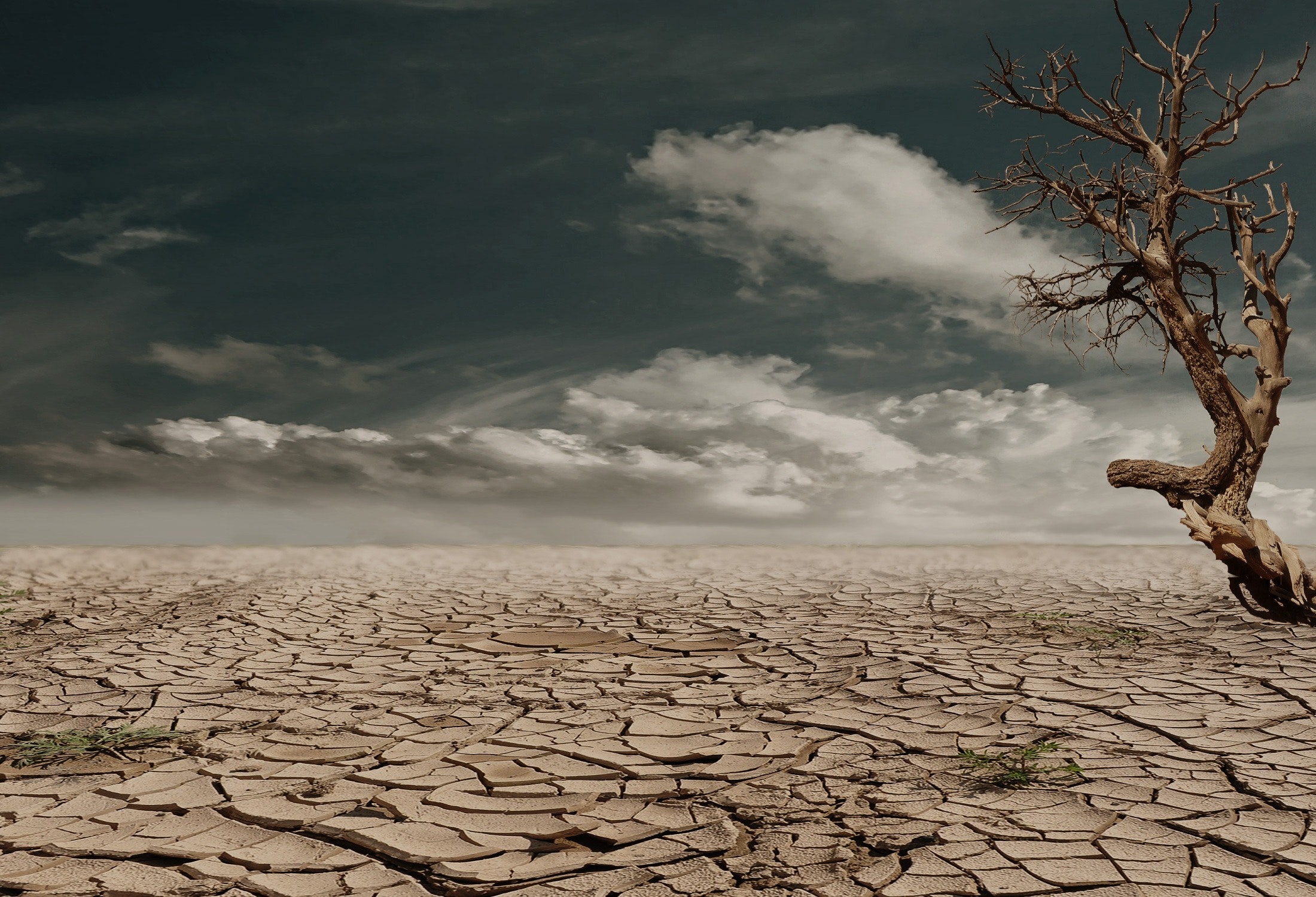Below are summaries from the National Significant Wildland Fire Potential Outlook, provided by the National Interagency Fire Center, for the period of May 2021 through August 2021. The full outlook can be located here.
Year-to-Date Statistics:
| Year-to-date statistics | Number of Fires | Acreage Burned |
| 2021 (01/01/21 – 03/03/21) | 17,593 | 457,138 |
| 2020 (01/01/20 – 03/03/20) | 12,471 | 257,329 |
| Percentage of 10-year Average | 105.83% | 51.55% |
Source: https://www.nifc.gov/fireInfo/nfn.htm
While the year-to-date acres burned remains below the 10-year average, there were notable large fires in April. This included two Type 1 Incident Management Teams being assigned to large fires in the Southwest during the last ten days of April.
Observations in April:
Drought Forecast:
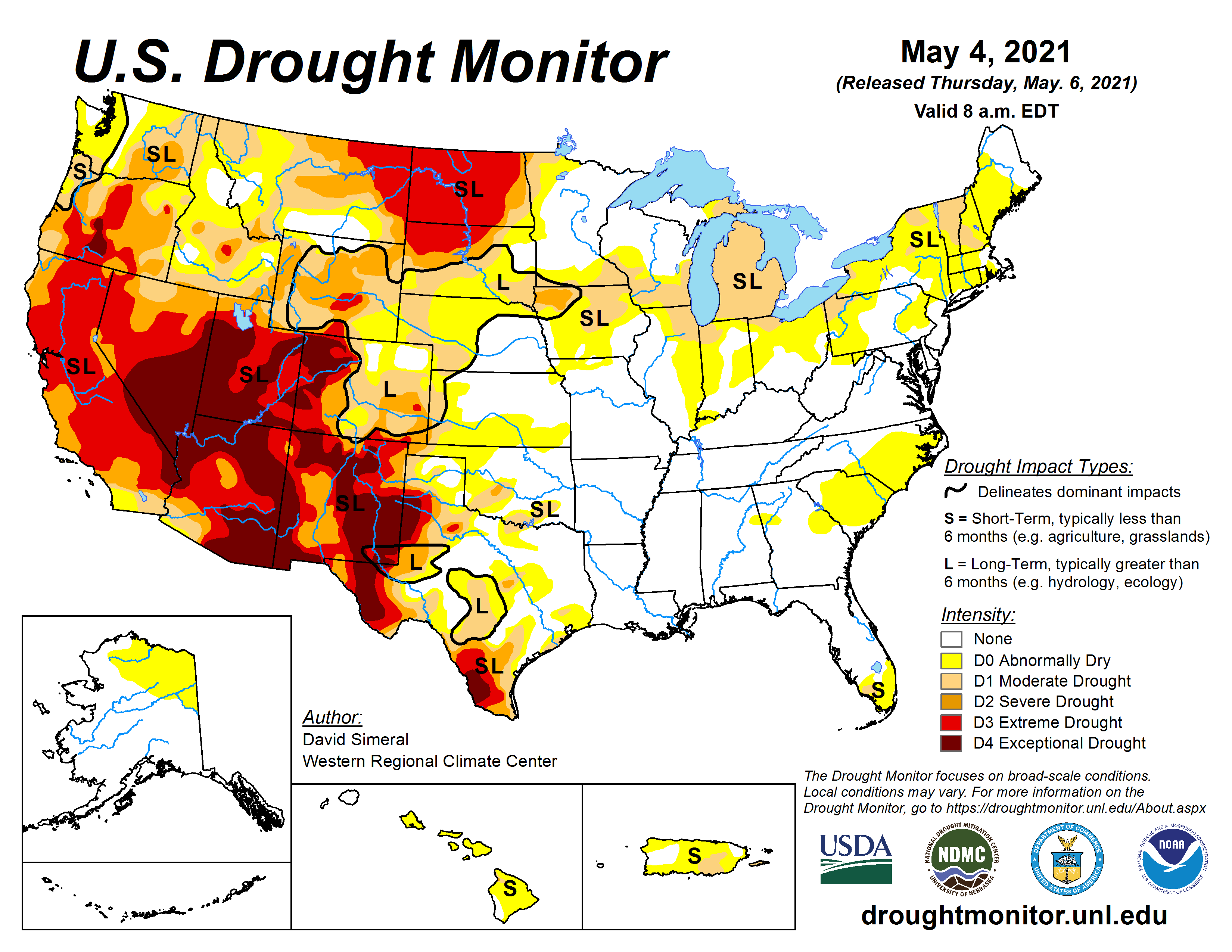
US Drought Monitor as of 4 May 2021
Wildland Fire Outlook for May-August:
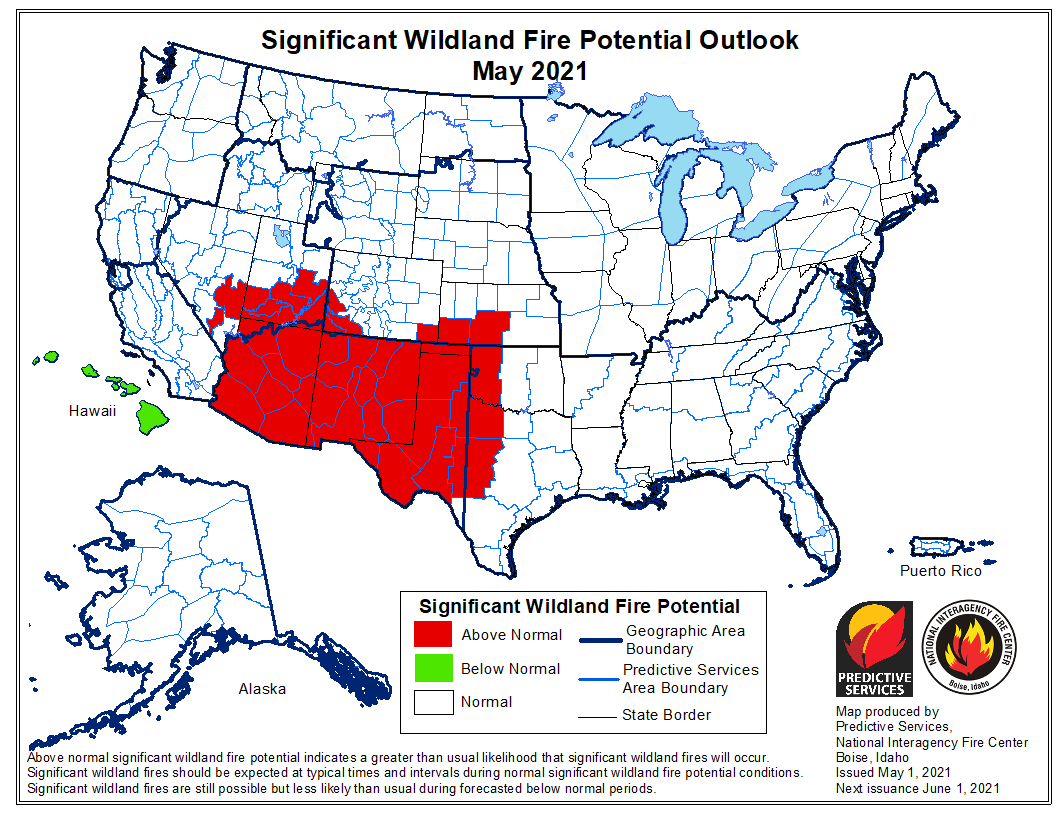
May 2021 Wildland Fire Potential Outlook
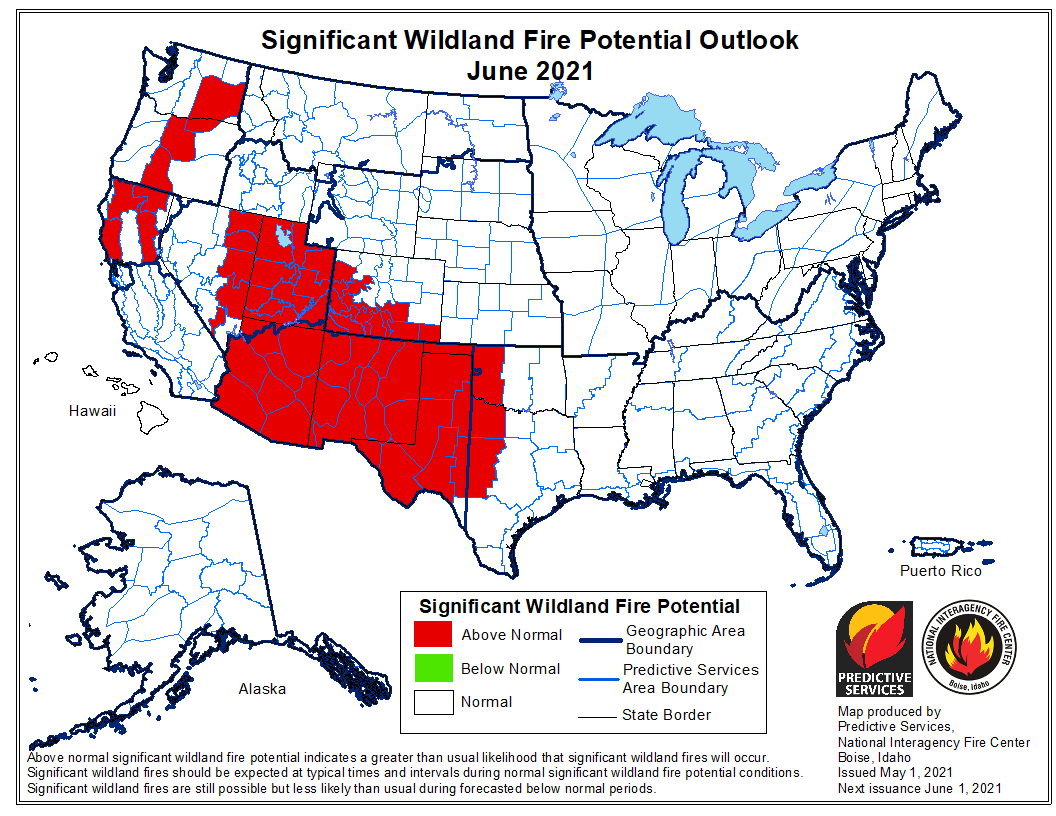
June 2021 Wildland Fire Potential Outlook
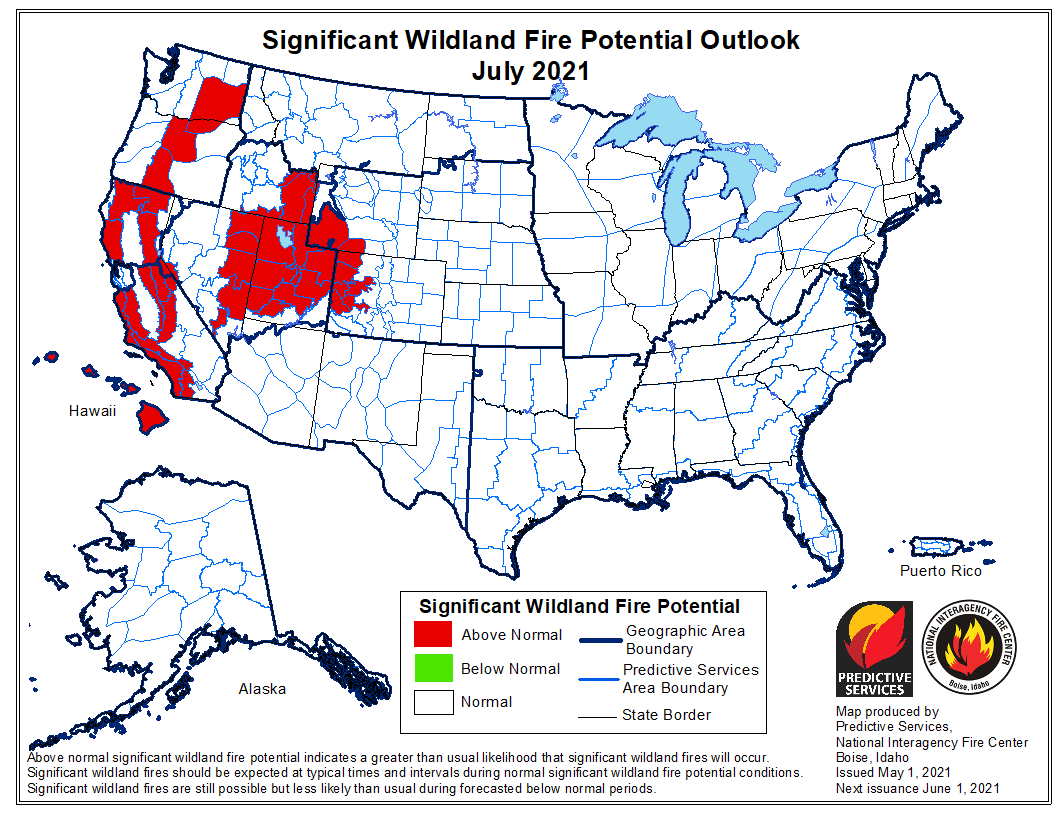
July 2021 Wildland Fire Potential Outlook
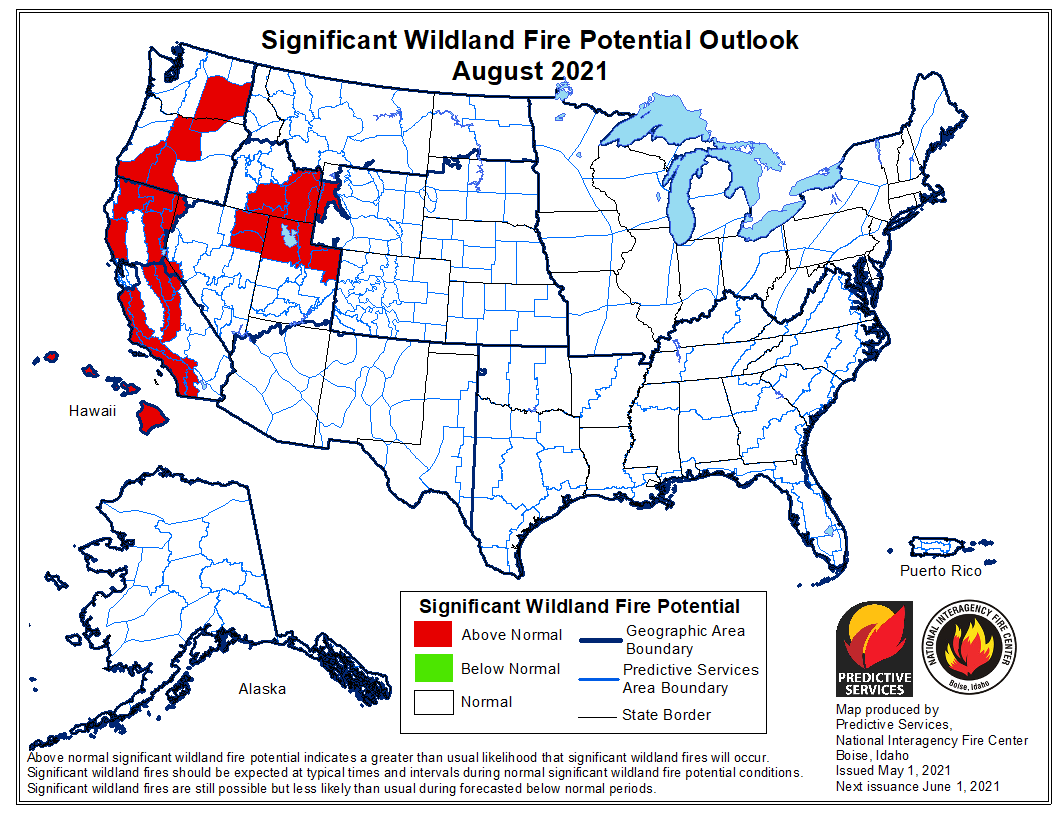
August 2021 Wildland Fire Potential Outlook
Source: NIFC

